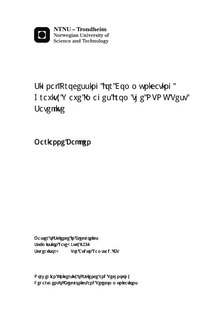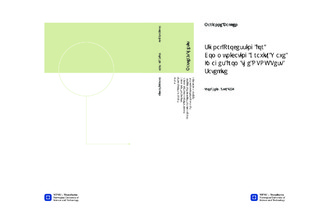| dc.contributor.advisor | Ramstad, Tor Audun | nb_NO |
| dc.contributor.author | Bakken, Marianne | nb_NO |
| dc.date.accessioned | 2014-12-19T13:47:53Z | |
| dc.date.accessioned | 2015-12-22T11:47:15Z | |
| dc.date.available | 2014-12-19T13:47:53Z | |
| dc.date.available | 2015-12-22T11:47:15Z | |
| dc.date.created | 2012-11-08 | nb_NO |
| dc.date.issued | 2012 | nb_NO |
| dc.identifier | 566520 | nb_NO |
| dc.identifier.uri | http://hdl.handle.net/11250/2370582 | |
| dc.description.abstract | The NTNU Test Satellite (NUTS) is planned to have a payload for observation of atmospheric gravity waves. The gravity waves will be observed by means of an infrared camera imaging the perturbations in the OH airglow layer. So far, no suitable camera has been found that complies with the restrictions that follows when building a small satellite. Uncooled InGaAs has however been concluded to be the most suitable detector type in terms of wavelength response and weight.InGaAs sensors are known to have a high dark current when not cooled, and processing must therefore be applied to remove the background offset and noise.The combination of the high speed of the satellite and the long exposure time that is required for the camera will create motion blur. Simulations with synthetic test images in MATLAB showed that the integration time should at least be kept under 1 second in order not to destroy the wave patterns. Longer integration times may however be required in order to get a sufficient SNR.Two signal processing solutions to this problem was investigated: motion blur removal by deconvolution and image averaging with motion compensation. The former strategy is to apply a long exposure time to get a strong signal, and then remove the blur with deconvolution techniques using knowledge of the blur filter.Simulations applying the Lucy-Richardson (LR) algorithm showed that it was not able to remove strong blur, and was very sensitive to errors in the blur filter and noise in the image. The other approach is to obtain a sequence of images with short exposure time in order to avoid motion blur, and provide the necessary SNR by shifting the images according to the known motion and combine them into one image. This concept is simpler and more reliable than the deconvolution approach, and simulations showed that it is less sensitive to errors in the speed estimate than the deconvolution algorithm. It was concluded that this is the most suitable approach for the NUTS application, and it should be implemented on-board the satellite in order to provide a good SNR for the compression to function optimally. The downlink datarate of NUTS is of only 9600 bit/s, and it has been estimated that 2.45 Mb of payload data can be downloaded on average per day. This corresponds to less than 5 uncompressed images of 256 × 256 pixels with 8 bit per pixel.A sequence of overlapping combined images should be obtained to provide a scan of a desired area, and it was suggested that it should be encoded as video to enable efficient compression and transmission of as many images as possible to the ground station. A three-dimensional DPCM algorithm combined with a deadzone quantizer and stack-run coding was implemented in MATLAB. Simulations demonstrated that this simple compression scheme can provide a bit rate of less than 1 bit/px for a sequence of ravity wave images. One of the quantizers that was tried gave 0.83 bits per pixel with reasonable quality. If this number can be achieved in practice, the image transfer ate would be increased to 45 images per day, which is a significant improvement. | nb_NO |
| dc.language | eng | nb_NO |
| dc.publisher | Institutt for elektronikk og telekommunikasjon | nb_NO |
| dc.subject | ntnudaim:7969 | no_NO |
| dc.title | Signal Processing for Communicating Gravity Wave Images from the NTNU Test Satellite | nb_NO |
| dc.type | Master thesis | nb_NO |
| dc.source.pagenumber | 211 | nb_NO |
| dc.contributor.department | Norges teknisk-naturvitenskapelige universitet, Fakultet for informasjonsteknologi, matematikk og elektroteknikk, Institutt for elektronikk og telekommunikasjon | nb_NO |

